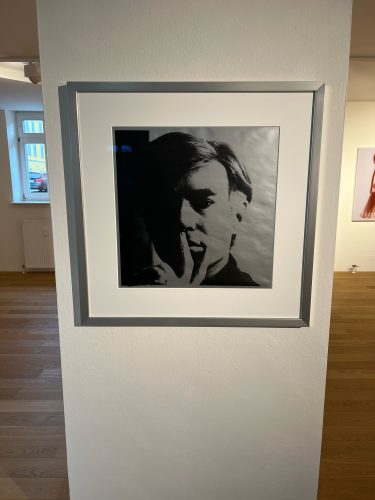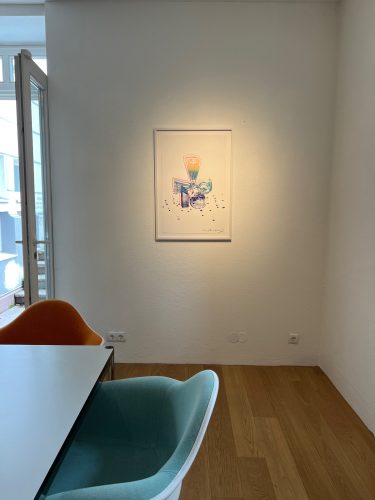
Andy Warhol
1928 – 1987
More than twenty years after his death, Andy Warhol remains one of the most influential figures in contemporary art and culture. Warhol’s life and work inspires creative thinkers worldwide thanks to his enduring imagery, his artfully cultivated celebrity, and the ongoing research of dedicated scholars. His impact as an artist is far deeper and greater than his one prescient observation that “everyone will be world famous for fifteen minutes.” His omnivorous curiosity resulted in an enormous body of work that spanned every available medium and most importantly contributed to the collapse of boundaries between high and low culture.
The turbulent 1960s ignited an impressive and wildly prolific time in Warhol’s life. It is this period, extending into the early 1970s, which saw the production of many of Warhol’s most iconic works. Building on the emerging movement of Pop Art, wherein artists used everyday consumer objects as subjects, Warhol started painting readily found, mass-produced objects, drawing on his extensive advertising background. When asked about the impulse to paint Campbell’s soup cans, Warhol replied, “I wanted to paint nothing. I was looking for something that was the essence of nothing, and that was it”. The humble soup cans would soon take their place among the Marilyn Monroes, Dollar Signs, Disasters, and Coca Cola Bottles as essential, exemplary works of contemporary art.

 Andy Warhol: Campbell`s Soup (Chicken Dumplings) »
Andy Warhol: Campbell`s Soup (Chicken Dumplings) »
 Andy Warhol: Self-Portrait »
Andy Warhol: Self-Portrait »
 Andy Warhol: Fiesta Pig »
Andy Warhol: Fiesta Pig »
 Andy Warhol: Committee 2000 »
Andy Warhol: Committee 2000 »
 Andy Warhol: Flowers 1964 »
Andy Warhol: Flowers 1964 »
 Andy Warhol: Cow »
Andy Warhol: Cow »
 Andy Warhol: Hammer & Sickle »
Andy Warhol: Hammer & Sickle »
 Andy Warhol: Muhammad Ali »
Andy Warhol: Muhammad Ali »
 Andy Warhol: Love »
Andy Warhol: Love »
 Andy Warhol: Queen Elizabeth II »
Andy Warhol: Queen Elizabeth II »
 Andy Warhol: Cantaloupes »
Andy Warhol: Cantaloupes »
 Andy Warhol: Campbell’s Soup II »
Andy Warhol: Campbell’s Soup II »